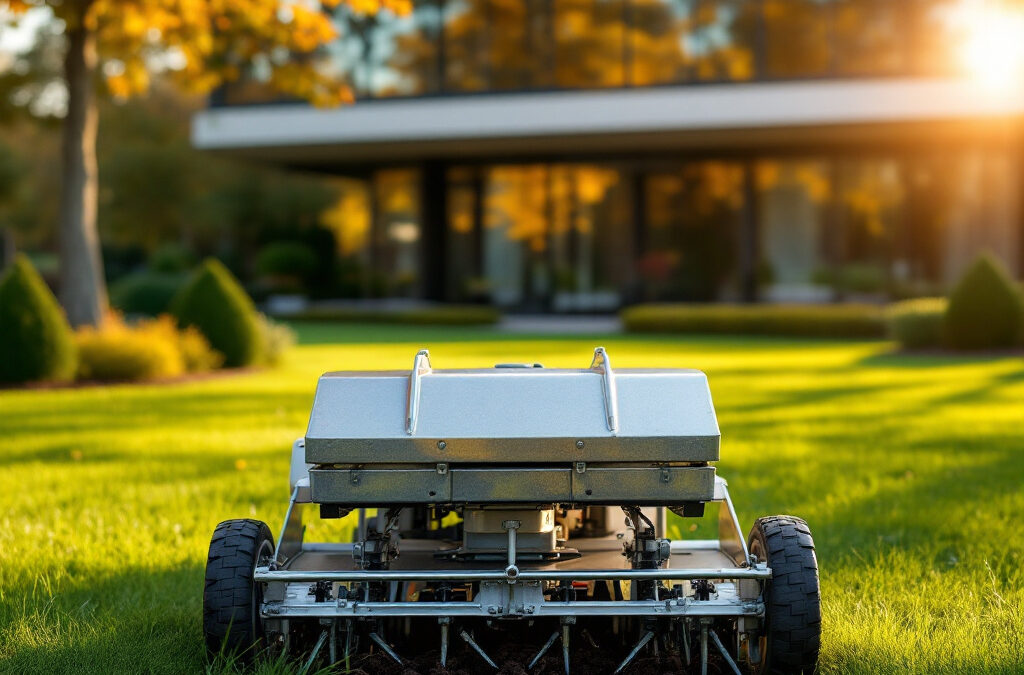Introduction
Lawn aeration is a crucial aspect of maintaining healthy commercial properties. Proper aeration improves drainage, enhances nutrient absorption, and supports healthier grass growth, which is essential for creating a welcoming environment for clients and visitors. In this article, we will provide detailed guidelines on how often you should aerate commercial lawns to maximize their health and appearance.
Understanding Lawn Aeration
Aeration is the process of perforating the soil with holes to allow air, water, and nutrients to penetrate the ground more effectively. There are two primary types of aeration: core aeration, which removes plugs of soil, and spike aeration, which creates holes without removing any material. The need for aeration can vary significantly based on several factors including soil quality, lawn type, and environmental conditions.
Need help with concrete work too? Check out what to expect during a commercial concrete installation project.
Factors Influencing Aeration Frequency
Several key factors affect how often aeration should be performed on commercial lawns. First, the type of grass species involved plays a significant role; cool-season grasses require different care than warm-season grasses. Additionally, the condition and type of soil, whether sandy, clay, or loamy, heavily influence aeration needs. Climate and weather patterns, such as rainfall and temperature variations, also dictate the best times for aeration, while the level of foot traffic on commercial lawns can lead to faster soil compaction.
Looking for construction advice? Learn about choosing the right concrete mix for your project.
Recommended Aeration Schedule
General guidelines suggest that aeration frequency varies based on the type of grass. For cool-season grasses, aeration is typically recommended every 1 to 3 years, while warm-season grasses may benefit from more frequent aeration, often once or twice a year. Seasonal considerations are important; the optimal times for aerating are usually in the spring or fall when the grass is actively growing. Property owners should make adjustments based on their specific climate to ensure the most effective results.
Also see our article on key safety measures for commercial concrete pours for additional maintenance tips.
Signs That Aeration is Needed
Recognizing when aeration is necessary is vital for maintaining a healthy lawn. Compacted soil often results in poor drainage and can be indicated by standing water or a spongy feel underfoot. Additional signs include thinning grass, bare patches, and increased weed invasion, which signal that the lawn is struggling to thrive. It’s also advisable to aerate before and after heavy traffic periods, such as events or busy seasons, to ensure the lawn can recover effectively.
Get expert bidding suggestions in our article on how to bid on commercial concrete jobs profitably.
Aeration Techniques and Best Practices
When it comes to aerating commercial lawns, property managers must decide between professional services and DIY methods. Hiring professionals often ensures optimal results, as they come equipped with advanced tools and experience. If choosing to take a DIY approach, essential equipment includes a core aerator or spike aerator, depending on the specific needs of the lawn. For effective aeration, it’s crucial to aerate when the soil is moist, and specific timing can impact the results significantly.
Learn more about the differences between residential and commercial concrete applications.
Post-Aeration Lawn Care
After aeration, proper lawn care is critical for maximizing benefits. Overseeding can be especially beneficial, as it helps fill in bare spots and promotes a lush, thick lawn. Fertilization following aeration is also recommended to replenish nutrients in the soil. Consistent watering after this procedure is essential, as it encourages seed germination and supports recovery, while monitoring lawn health for any issues in the weeks post-aeration is vital.
Explore the curing times for commercial concrete projects for insight into long-term maintenance.
Read about the importance of reinforcement in commercial concrete work to enhance your property management knowledge.
Conclusion
In conclusion, lawn aeration is an essential practice for maintaining the health and aesthetics of commercial properties. By assessing specific lawn needs and following the guidelines laid out in this article, property managers can determine the appropriate aeration frequency and methods.
We highly recommend consulting with a lawn care professional for personalized advice. If you’re ready to improve your commercial property’s curb appeal, call us at 916-562-2345 to get a personalized quote today!
Also, be sure to review our guide on how weather affects commercial concrete pours and our helpful pre-pour checklist for large commercial jobs that every property manager should know.


